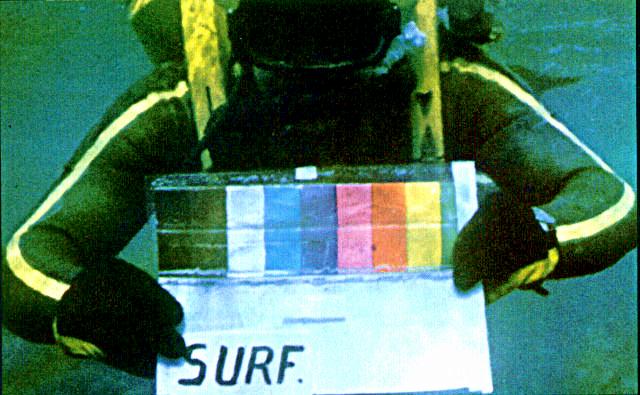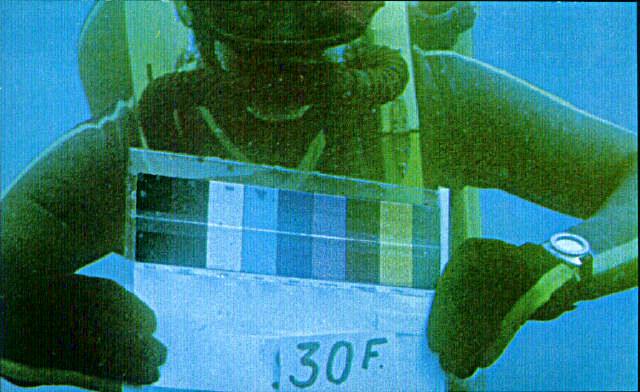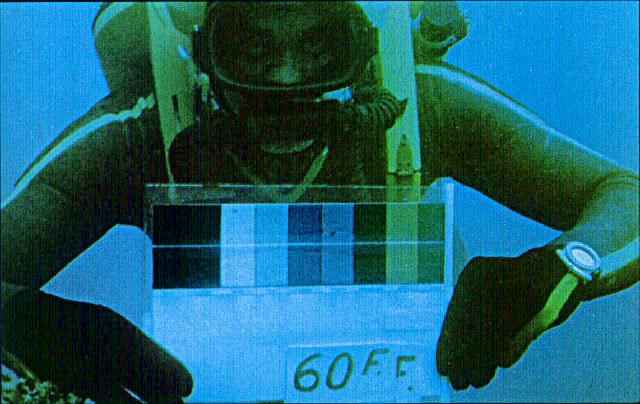I agree with Ryan that corals do better and thus have their best color when the water is just how they like it both is composition and movement. But lighting does have an important role.
The answer to the original question is not cut and dry. Some coral will grow better in lower
Kelvin light, like bright sunlight, especially those coral that
naturally grow in the surf and down to 20 feet. The coral we grow
in our tanks come from depths of 5-100 feet or more. All those coral will not
do so well in bright sunlight because some of that light spectrum
(like red) actually inhibits growth in deeper dwelling coral. We assume that zooxanthellae are
genetically inclined to grow best at specific wavelegths of light which
approximate the wavelengths of light they receive at their ideal depths. See
the pics below for a revealing look at light in the ocean.
From what I have seen and learned in the last 20 years, MH bulbs for the
aquarium hobby were developed from low Kelvin value bulb technology
(5000-10000K). The technology had developed some very powerful
yellow-white lights. Though the color we saw in those bulbs was
yellow-white, the amount of blue wavelength light in those bulbs was
also very intense. This meant that those bulbs were found to grow coral
very well because they also put out intense blue light.
In recent years the technology for aquarium MH bulbs has greatly
improved. The manufacturers have developed intensely powerful bluish
white and blue (12000-20000K) MH bulbs. So now we find coral growing
just as fast under those lights as it used to grow under the old
6500-10000K MH lights. Add to that the addition of intense illumination
from fluorescent lights developed for the hobby with the bluer spectrum
in mind and we now find coral growing faster than ever before.
Most of the color we see in coral is reflected light. The color of the
coral is dependent on whatever light wavelengths are shining on the
coral The lower the Kelvin value the yellower the light source and the
more of the color of the coral is simple reflected light and thus not
real interesting.
Coral absorb some wavelengths of light and in turn emit light in
wavelengths that vary slightly from what was shined upon them. Most but
not all of this reflected or emitted color comes from the zooxanthellae
algae, but it would be misleading to say that it's all due to the
algae, because without the coral, the algae wouldn't survive for long
and vice versa.





Thank you Jacques Cousteau.

Edited by Mark Peterson - September 01 2011 at 6:35pm